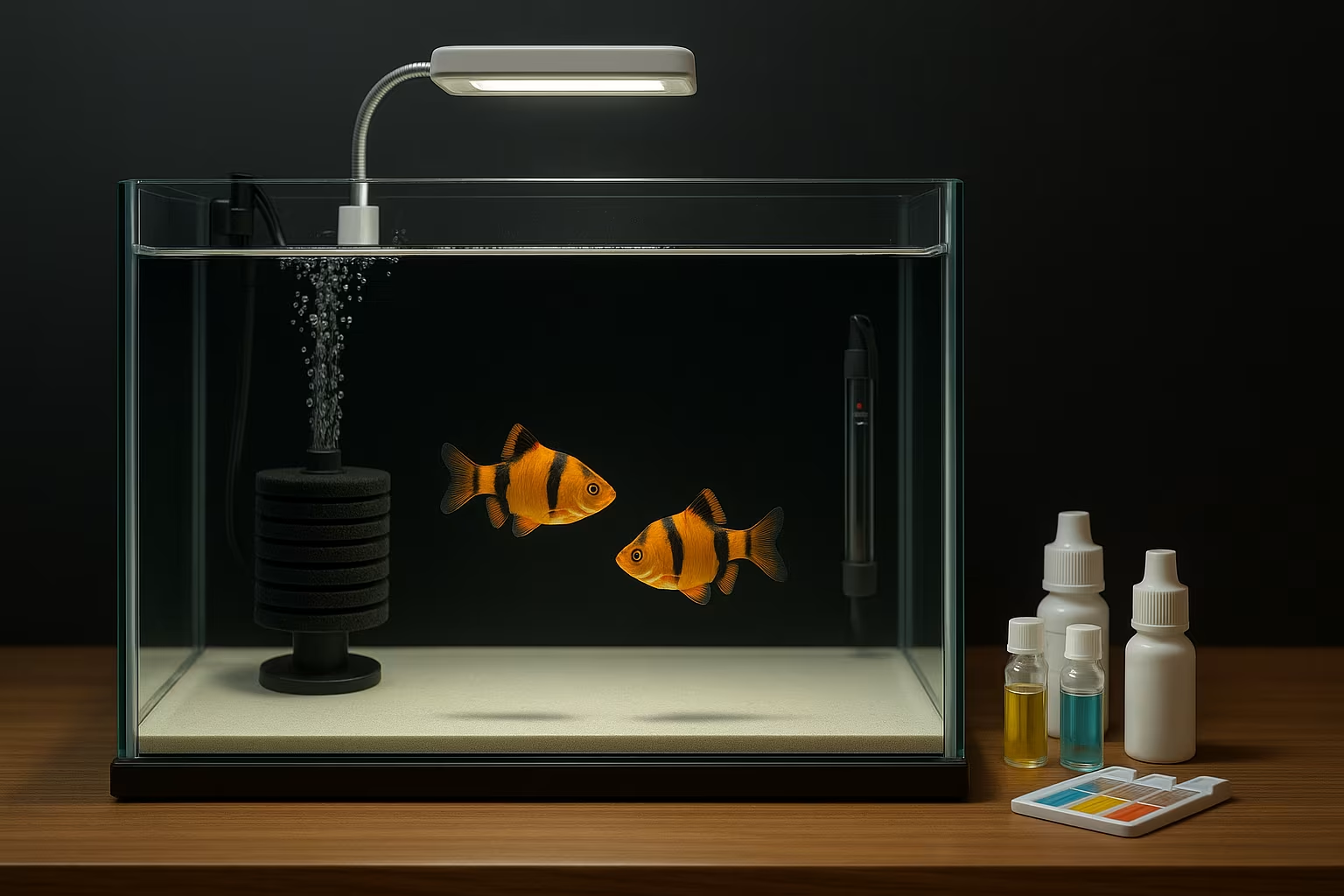

Most aquarium diseases hitchhike in on new fish or plants. Once pathogens hit the main tank, you’re treating everyone fish, plants, filter bacteria and hoping nothing crashes. A simple quarantine tank costs little and stops 90 % of outbreaks before they start.
| Item | Minimum spec | Cost guide | Why it matters |
|---|---|---|---|
| Spare tank or tub | 10 gal, bare bottom | $15–$30 | Easy to clean, no substrate traps meds |
| Sponge filter + air pump | Rated for 10–20 gal | $20 | Gentle flow, keeps bacteria alive |
| Small heater | Adjustable, 50 W | $15 | Stable 78 °F speeds parasite life-cycle |
| Black poster board | 3 sides | $2 | Reduces stress so symptoms show clearly |
| LED clip-on light | Low output | $12 | Lets you inspect color and fins daily |
Seed the sponge filter in the main tank for a week, then move it to the quarantine tub instant bio-filter, zero ammonia spikes.
| Day range | What to do | Purpose |
|---|---|---|
| 1 | Observe, feed lightly; test ammonia daily | Check for immediate transport stress |
| 2–7 | Prophylactic salt bath: 1 tsp per gallon | Nips early Ich; gentle on barbs |
| 8–14 | Normal feeding, daily inspection under light | Look for fin fray, clamped fins, flashing |
| 15–21 | Optional wide-spectrum med if ANY sign appears | Treats before parasite load explodes |
If fish stay symptom-free for three straight weeks, transfer them with a soft net no quarantine water enters the display tank.
| Symptom | Likely cause | First response |
|---|---|---|
| White “salt grains” on fins | Ich | Raise temp to 82 °F; add 1 tsp/gal salt; med if spots persist 48 h |
| Ragged fin edges, red streaks | Fin rot (bacterial) | Large water change; start antibacterial food |
| Grey film over body, loss of scales | Columnaris | Isolate fish; begin broad-spectrum antibiotic |
| Gold dust sheen, rapid gills | Velvet | Black-out tank 48 h; copper-based med |
Catch it early and most cases clear with one course; miss the window and you’re dosing the whole display tank costs triple, kills snails, stalls plants.
| Medicine | Works for | Dosage tip | Common mistake |
|---|---|---|---|
| Aquarium salt | Ich, nitrite stress | Dissolve first, never dump crystals on fish | Mixing with copper—can precipitate and weaken effect |
| Malachite green + formalin combo | External parasites | Double aeration—O₂ drops fast | Overdosing—turns gills brown |
| Nitrofurazone | Bacterial fin rot | Remove carbon; it removes drug | Treating more than 5 days—can nuke bio-filter |
| Kanamycin + metronidazole mix | Columnaris, internal flagellates | Feed in gel to target gut | Using as water dose only—wastes drug, weakens fish |
Always finish the full course even if fish look fine on day 3 so pathogens don’t rebound stronger.
Head count are all barbs schooling normally.
Color checks any dull stripes or grey patches.
Gill rates watch one fish for 10 seconds: sudden rapid breathing signals ammonia or gill parasite.
Waste watch white stringy poop means gut flagellates; adjust diet, offer medicated food if persistent.
Log notes on your phone; trends jump out faster than memory.
A $60 quarantine setup and three weeks of patience save you unplanned med bills, lost livestock, and bio-filter resets. Detect trouble in the tub, treat in small water volume, and only introduce barbs that show perfect fins, bright stripes, and solid appetite. Your display tank and your wallet stay healthy.
Next up, Article 6 tackles water chemistry: mastering pH, hardness, and nitrate so your Golden Tigers never fade.
Restock alerts, care tips, and the occasional coupon one email a month, unsubscribe anytime.